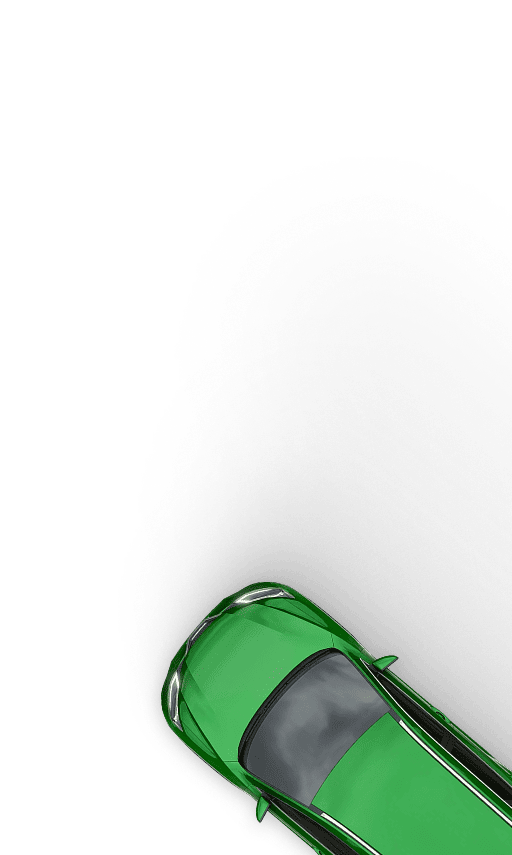Can a Blocked Diesel Particulate Filter (DPF) Cause Turbo Failure?
A clogged DPF is awful for your engine performance, but it can also destroy your turbo. Backpressure rises, heat builds. All of a sudden the turbo ends up doing all the work your exhaust can’t. Spot the signs early, fix the blockage fast and you can save yourself a four-figure repair bill.
Last updated: 27th November, 2025

Anthony Sharkey is COO at New Reg Limited (Car.co.uk, Trader.co.uk, Garage.co.uk), driving innovation in vehicle recycling, logistics, and customer experience.

Listen to this story
A blocked diesel particulate filter definitely can cause turbo failure, and it happens more often than people realise. When exhaust gases can’t escape, heat and pressure build up and the turbo ends up taking the hit.
A properly functioning DPF also matters from a legal standpoint. UK vehicles have to meet emissions rules under the Road Vehicles (Construction and Use) Regulations 1986 and Euro 6 emissions standards. Removing or tampering with a DPF is illegal, and DVSA checks during an MOT will issue an automatic fail if the system’s been altered or isn’t working.
When that filter blocks, though, compliance is the least of your worries. It affects engine breathing, temperatures, fuel economy… and yes, the turbo’s lifespan.
This guide walks you through how a blocked DPF damages a turbo, the signs to look for and what you can realistically do next.
What's in this article
What happens to the turbo when the DPF is clogged?
When you have a blocked DPF, the exhaust can’t flow out of the engine freely. That creates backpressure, which is just a fancy way of saying “pressure pushing in the opposite direction the exhaust wants to go”.
Imagine trying to breathe out through a blocked straw. That’s roughly what your engine is dealing with.
The turbocharger relies on fast-moving exhaust gases to spin its turbine wheel. The hotter and faster that flow, the better the turbo performs. When the DPF starts to fail, the exhaust slows down and gets trapped. Instead of driving the turbine, the pressure builds up around it.
That strain shows up in a few ways:
- The turbo has to work harder just to maintain the same boost. Efficiency drops because the turbine isn’t receiving the clean, high-velocity flow it’s designed for.
- Temperatures rise inside the turbo housing. Excess heat weakens seals, burns oil and accelerates wear on the bearings.
- Oil gets pushed in the wrong places. Backpressure forces exhaust heat into the turbo’s oil feed and return lines, thinning the oil and possibly even cooking it.
Short term, you might feel sluggish acceleration or hear a faint whistle from the turbo’s overheating internal bearings. Long term, the risks escalate: worn seals, oil leaks into the intake, over-speeding, bearing collapse and ultimately full turbo failure.
What the experts say

Steven Jackson OBE
How to spot a turbocharger that has had DPF problems
A turbo that’s been stressed by a blocked DPF often shows its symptoms long before it fails outright. Maybe you won’t be able to connect the dots immediately, but the clues are usually there if you know what to look for.
- Unusual noises from the turbo: Because of the backpressure, the turbocharger has to work extra hard to push exhaust gases out. Once the extreme heat and stress do enough damage to the internal bearings, the resulting metal-on-metal contact will cause it to whistle or screech.
- Loss of power and acceleration: When the DPF can’t spin freely, the engine struggles to breathe. In most cases, you end up with a double hit: sluggish throttle response (because the engine is literally fighting trapped exhaust) and weak pull/acceleration (because the turbo can’t build proper boost).
- Excessive exhaust smoke: Black smoke usually means unburnt fuel. Blue smoke tells you there’s oil getting into the combustion process. Grey smoke means the engine’s burning oil, usually from an issue like worn piston rings. And white smoke is normally steam, not soot or oil – it usually means coolant is entering the combustion chamber (e.g. from a failed head gasket). Remember that DPF blockages mainly produce black smoke. It’s once the turbo starts to suffer as well that you get blue, grey or white depending on which component is failing first.
- Warning lights on the dashboard: The main one is the DPF warning light. But you might also see the engine management light or the glow plug warning. If the DPF light and EML appear together, something in the combustion or airflow process isn’t healthy and you’re closer to serious internal damage. When the glow plug light appears with DPF problems, it means the ECU has detected a fault serious enough that it doesn’t trust the engine to run normally. In both cases, it’s your cue to stop driving and have it checked.
- Error codes indicating turbo and DPF problems: A blocked DPF and a struggling turbo frequently show up as paired fault codes. Common DPF codes include P2002, P2463, P244A, and P2452, while turbo strain typically triggers P0299 (underboost), P0234 (overboost), P2263 (turbo performance), or P2563 (actuator issues). When backpressure affects the airflow sensors, you may also see P0101 or EGR flow codes like P0401. You can read these with any decent OBD2 scanner; tools like Autel and iCarsoft are better at diesel-specific systems.
How can you prevent turbo failure caused by DPF problems?
Mostly, it comes down to maintenance and driving habits.
Modern diesel engines automatically regenerate their diesel particulate filters to burn off the soot they accumulate. They do this through either passive regeneration (high-speed driving where exhaust temperatures rise naturally) or active regeneration (the ECU deliberately heats the exhaust to clear the filter).
When the DPF fills up faster than the system can burn it away, it’s almost certainly because (a) you either aren’t giving the car the right driving conditions or (b) something else in the engine is creating excess soot. And when the DPF isn’t clear, it puts tremendous strain on the turbo.
There are 5 practical ways to stop that from happening before it starts:
- Regular DPF maintenance: A DPF that’s partially blocked can usually be saved with an on-car clean, forced regeneration, or specialist fluid treatment. Once it’s heavily overloaded, you’ll need an off-car clean where the filter is removed and flushed with high-pressure machines. Doing this at least once per year keeps it clear, which means you won’t put too much strain on the turbo.
- Timely DPF regeneration: Diesels need the right conditions for active/passive regen to finish. That means consistent speed, warm engine temperatures and uninterrupted driving for at least 10 to 20 minutes. If you only take short trips and drive in stop-start traffic, a cycle will never have the chance to begin. If that’s you, making space for a proper weekly regen run is one of the simplest ways to prevent DPF overload and protect the turbo from unnecessary heat and backpressure.
- Monitoring exhaust gas temperature: The DPF only regenerates properly when the exhaust is hot enough. You can use an OBD2 reader to view live exhaust temperature. If it never climbs, or drops sharply during regen, that points to sensor faults or driving patterns that never allow the engine to get warm enough. Fixing this early prevents the kind of soot buildup that’ll cook your turbo.
- Avoiding short trips and frequent idle: If most drives are short and slow, the engine never reaches regeneration temperature. One simple fix is to take the car for a 15 to 20 minute run on the motorway at 50 to 60 mph once a week. Hold the revs slightly higher than usual (~2,500 rpm) to keep heat in the exhaust. This is usually enough to prevent soot buildup entirely.
- Replacing the DPF and turbo when needed: If the DPF is too blocked for cleaning or the turbo has already worn its seals and bearings, replacement is the only realistic option. When fitting a new turbo, always clean or replace the DPF at the same time; otherwise, the backpressure from the old filter will just ruin the new unit.
Is it worth repairing a car with DPF and turbo issues?
That answer depends on a few things, because a failed turbo and a blocked DPF can be either a sensible repair… or the point where the car becomes a money pit. A quick cleaning or forced regeneration will cost £300 to £400, tops. But DPF replacements cost anywhere from £1,000 for a small passenger vehicle to £3,500+ for an SUV or high-performance model.
So, as with any car repair, the big factors are the age and mileage of the vehicle, the cost of the repair and whether the car still has enough life left in it to justify the investment.
When repairing is worth it
If the car is newer, holds its value and still has plenty of miles left in it, repairing a failed turbo or blocked DPF is usually the smart move. You’re restoring two major components that can easily give you another 100,000 miles when everything else in the car is still strong.
It’s also worth repairing if the DPF only needs a professional DPF cleaning rather than a full replacement. In that case, you can often fix the issue for a couple of hundred quid and avoid a four-figure turbo failure entirely. That’s money well spent.
And apply the simple 50% Rule: If the repair costs less than half the value of the car and the rest of the vehicle is in good condition, you’ll almost always get your money’s worth back through future use.
When scrapping your car is the better option
It’s better to scrap your car when the repair bill comes close to or exceeds its value. A turbo and DPF replacement will almost always run into four figures, so if the vehicle is already 10+ years old, has 100,000+ miles or is worth less than the repair, you’re throwing good money after bad.
It’s also worth walking away if the DPF isn’t just blocked but too far gone to clean, or if the turbo has suffered a full mechanical failure with oil contamination throughout the system. At that point, you’re paying for labour, deep cleaning, expensive parts and tonnes of extra components that push the total far past what most cars are realistically worth.
And if the car has multiple underlying issues, be it weak injectors, EGR problems, a tired clutch or anything else that’ll fail its MOT, scrapping is the cleaner and cheaper exit. Once the cost of getting the car roadworthy again crosses that 50% threshold, it’s not worth saving.
Scrap your car with us and we’ll pick it up today or tomorrow, free of charge, then pay you on the spot.
Frequently asked questions
A blocked DPF can cause turbo failure, even in new cars, because age doesn’t protect a turbo from backpressure. If you drive a new diesel mostly on short trips or it has a sensor fault that prevents proper regeneration, the DPF can clog early and push excess heat and strain onto the turbo. It’s less common, but definitely possible.
Just because the “turbo seems fine”, that isn’t enough of a reason to keep driving it. The turbo might feel fine, but every mile you drive with high backpressure is still cooking the bearings and seals and forcing the turbo to work harder. It’s one of those problems that seems harmless until it suddenly isn’t. If the DPF light is on, get it sorted ASAP.
Yes, if you use cheap aftermarket DPFs, you might end up with turbo issues. Low-quality aftermarket DPFs sometimes have weak flow characteristics and smaller internal volume, which increases backpressure even when it’s “clean”. That stress gets passed straight to the turbo. Good aftermarket units are fine, but the bargain-bin ones cause more problems than they solve.
If your turbo is failing because of a blocked DPF, you’ll see a DPF warning light, repeated regeneration attempts, rising exhaust temperatures and low-boost fault codes at the same time. If the turbo shows oil leaks, excessive shaft play or boost issues with no DPF faults, then the turbo itself is the primary issue. So all you have to do is look at the pattern.
Slow throttle response, early or frequent regeneration attempts, higher fuel consumption, a DPF light that keeps returning and exhaust temperatures that spike under light load are the early indicators. And once you start hearing the turbo whining louder than usual, the DPF is already impacting it.
About Car.co.uk

Share on
Latest news & blogs






![How to Sell a Car Privately in the UK [2025]](https://stage-drupal.car.co.uk/s3/files/styles/media_section_large_teaser_mobile/public/2025-11/how-sell-a-car-privately-in-the-uk.jpg?itok=ubSHbYCJ)



